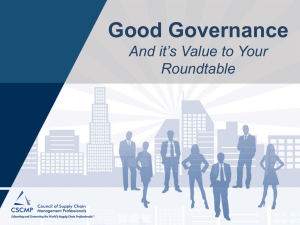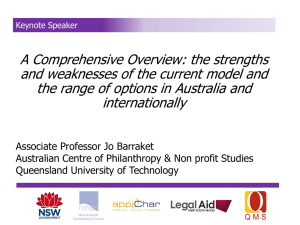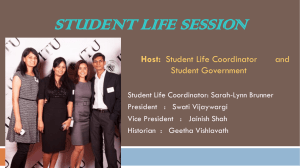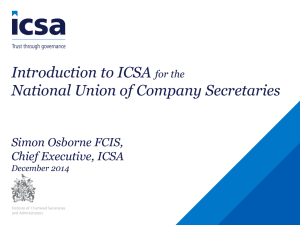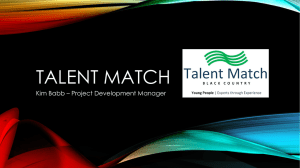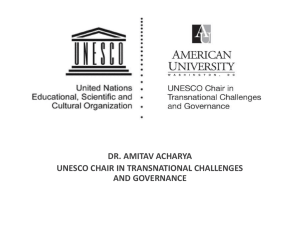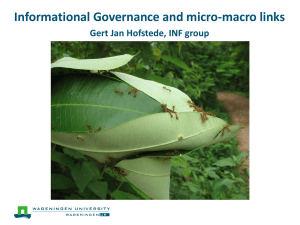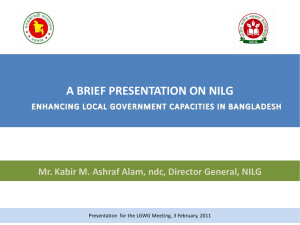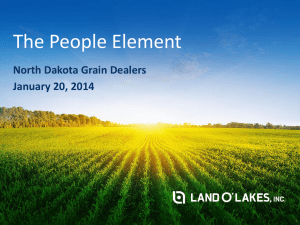Narayan Ramtahal
advertisement
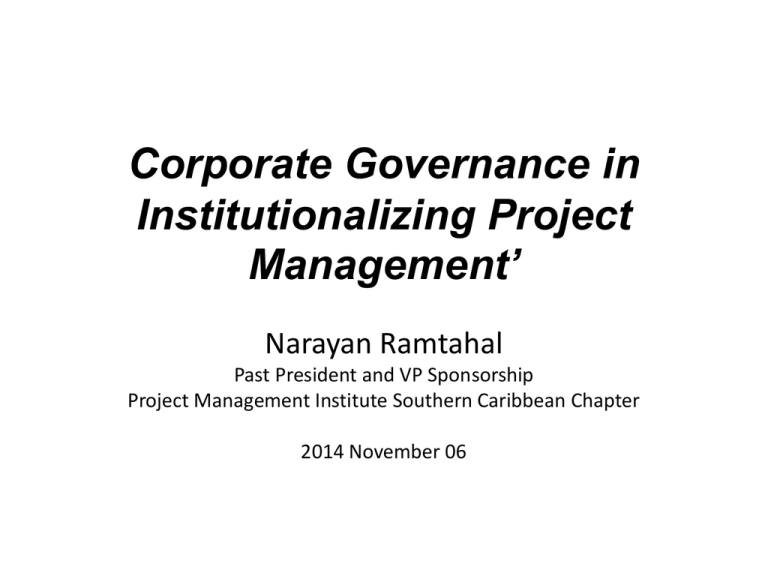
Corporate Governance in Institutionalizing Project Management’ Narayan Ramtahal Past President and VP Sponsorship Project Management Institute Southern Caribbean Chapter 2014 November 06 The Role of Corporate Governance in Sustainable Success in Project Management Lessons from high-performing organizations and their approaches to project, program, and portfolio management suggest that some key drivers to sustainable success in the implementation of projects are the Alignment of project management to organizational strategy and Cultivating project management talent. These initiatives fall within the ambit of the corporation and corporate governance play a most important role in institutionalizing and driving project management. The paper will focus on these success factors and will discuss issues such as Technical Project Management skills, Strategic and Business Management Skills and Leadership skills. It suggests that developing top-tier project talent does not happen overnight, Organizations must invest time and resources to identify high-potential project managers, give them the training and opportunities they need to advance and align the best talent to the strategic projects. Contents • • • • • • • • • • Project Management context Corporate Governance Project Governance New Critical PM skill sets New PM Triple constraints Drivers of Organisation’s PM success Next generation PM skills Project Talent Management Tiered Structure of PM Seniority Conclusion 1.0 What is project management Project management is the application of knowledge, skills and techniques to execute projects effectively and efficiently. It is a strategic competency for organizations, enabling them to tie project results to business goals • Processes – Initiating / planning / executing / controlling /closing • Knowledge areas – Project Integration Management / Scope / Time / Cost / Quality / HR / Communications / Risk /Procurement / Stakeholder • Project life cycle and phases 1.2 Overlap of Process Groups in a Phase (PMBOK Guide, 2000, p. 31 1.3 Context of Project Management • Operates in a broad based organizational system • Adheres to Organizational standards • Requires Top Management Commitment 1.4 The Context Corporate Governance Project Governance Co ProProoject Project Management 1.5 Corporate governance • Corporate governance encompasses all work done in an organization • Governs the work in traditional line organizations • Governs the work done in temporary organizations, such as projects. • Corporate governance interfaces and overlaps with project management governance • Corporate Governance sets the boundaries for the governance of projects • Increasingly aware of the importance of corporate risk management, sustainable development and ethical practice 1.6 Project Governance • Project governance is the management framework within which project decisions are made. • Project governance is a critical element of any project since while the accountabilities and responsibilities associated with an organization’s business as usual activities are laid down in their organizational governance arrangements, seldom does an equivalent framework exist to govern the development of its capital investments (projects) 2.0 Drivers of Organization’s Project Success Lessons from high-performing organizations and their approaches to project, program, and portfolio management: 1. Alignment of project management to organizational strategy 2. Cultivating project management talent 3.0 Success Criteria: Governance of Project Management The governance of PM concerns those areas of Corporate Governance that are specifically related to Project Activity. Effective Governance of PM ensures • Organization’s portfolio of projects is aligned to organization’s objectives • Is delivered efficiently • Is sustainable • How the PM Capability of the organisation is achieved and sustained 3.1 Governance of Project vs Governance of Project Management 4.0 Next Generation skills in Project Management • Technical Project Management skills – Greatest shortage – Teachable • Strategic and Business Management skills – Teachable • Leadership skills – Search for talent with these skills 4.1 Change in Triple Constraints Original Triple Constraint Talent Triangle – Next Generation Skills Time Technical Cost Leadership Scope Strategic and Business Management 5.0 Talent Management Initiatives • Defined career paths and skills requirements • Identification and grooming of top performers by senior management • Regular assessment reviews • Alignment between strategic goals, project portfolios and staff • Stretch assignments that give young project leaders opportunities to extend their skills, knowledge and network • Mentoring and coaching 5.1 Tiered Structure of PM Seniority 1. Associate project manager: Plans, organizes, monitors and leads small teams ,with PMI Certified Associate in Project Management (CAPM)® certification or Project Management Professional (PMP)® preferred. 2. Project manager: Manages all aspects of moderately complex medium- to large-scale projects CAPM® or PMP® credential preferred. 3. Program manager: Oversees and supports programs and processes across the institution. 4. Senior project manager: Manages all aspects of highly complex medium- to large-scale strategic projects that span three or more organizational boundaries. PM P credential required. 5 Project director, directing and managing multiple interrelated implementations, or portfolio manager, managing governance and project management processes, methodologies and tools.. 5.2 Implementing a Project Talent Management Program organizations should • • • • • Hold leaders accountable for developing the next generation. “At Fluor we have 600 executives who are our internal talent scouts,” says Fluor’s Mr. Gilkey. “Having a culture where people want to help others succeed can’t be understated.” Look for passion and confidence as signs of high performers. Although leadership should provide training and new kinds of opportunities, the ideal individuals will pursue education, credentials and experiences on their own, says NASA’s Dr. Hoffman. Build a support structure that nurtures young talent. Everyone makes mistakes, and when new project managers are put into stretch assignments, it increases their risk of failure. “Make sure they have a network and leadership guidance so they have someone to turn to when they need help,” Mr. Gilkey says. Educate the organization about the value of project management skills in meeting strategic goals. When companies align their talent development efforts with business results, people pay attention, says MD Anderson Cancer Center’s Ms. Layne. Plan ahead. It takes years to build a project management talent pipeline, and companies should be consistently developing the right skills in the right regions, says Fluor’s Mr. Brown. 6.0 Conclusion • Organizations must invest time and resources to identify high-potential project and program managers and give them the training and opportunities they need to advance. • Developing top-tier project talent does not happen overnight. • Aligning the best talent with projects and business needs is mission critical to a company’s success and it attracts future professionals by reinforcing the talent brand References • PMI White Paper on Building HighPerformance Project Talent. • PMI’s Pulse of the Profession™ In-Depth Report: Talent Management. • Project Management – Harold Kersner

